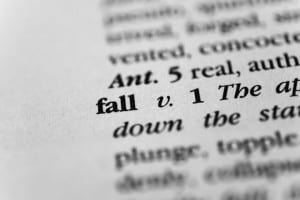 Slip and fall cases can be extremely unsuccessful, especially if the plaintiff – or their attorney – does not properly prepare. Just because a person has fallen on someone else’s property does not mean that they have a case.
Slip and fall cases can be extremely unsuccessful, especially if the plaintiff – or their attorney – does not properly prepare. Just because a person has fallen on someone else’s property does not mean that they have a case.
In fact, plaintiffs have a heavy burden of proof and must provide sufficient evidence in order to prove that they deserve compensation. There are four key elements that must be proven in a slip and fall case in order to win the claim. Without being able to prove all four, there is no legitimate lawsuit.
These four elements are:
In premises liability cases, “duty” refers to the owner’s responsibility to maintain the premise and address any issues that may cause harm, within reasonable means. This requires an evaluation of whether or not the property owner should have had control of the premises. A property that has a management company overseeing the management and care of the property is not the same as the property owner. It is important that a plaintiff determines which individual had control of the property at the time of their accident, as this individual is the one responsible for their injuries.
Notice is one of the more critical steps in proving a slip and fall case. The plaintiff’s attorney may call on experts that will testify that the defendant would have – or should have – known about the hazard, but ignored it. If the issue just occurred and there was not a reasonable amount of time that passed for the defendant to discover the hazard or correct it, there may be no legitimacy to the claim.
The hazard must be a dangerous condition and not a minor defect. The plaintiff is required to show that the defendant knew or should have known about that existing danger and ignored it. They also must show that it was an unreasonable hazard that caused the injury. Normal wear and tear does not create the potential for harm; therefore, minor defects do not classify as hazards.
Most importantly, a plaintiff must prove that there were damages associated with their injury. That means that they had injuries and costs – medical bills and lost wages, for example – that were the result of their injury. If the plaintiff has no damages associated with their slip and fall accident, there is no claim.
If you have been injured in a slip and fall, you need to bring your case to a qualified attorney for assessment. The Law Offices of Kevin J. Roach, LLC can assess your case during a free consultation. Schedule your appointment at 636-519-0085 or fill out an online contact form with your questions.